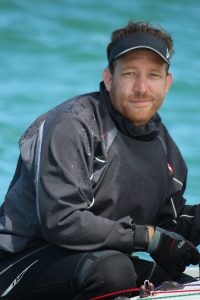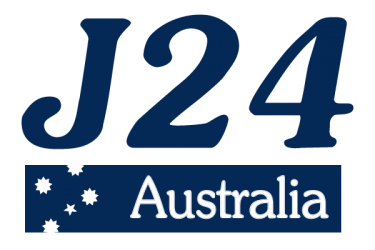
North Sails Australia is pleased to announce the appointment of Sam Haines as our One Design leader for Australia.
Sam is based out of our Melbourne loft and will be co ordinating all one design activity Australia wide.
Sam’s responsibilities include communicating with the North One Design class leaders worldwide to ensure that North Sails Australia customers may be confident that they are receiving the latest designs, advice and tuning. Sam is also actively involved in sail development of several classes.
To welcome Sam into his new role North Sails Australia are pleased to announce a special One Design promotion.
Starting July 15th 20116 and running until the August 15th 2016 for standard design OD orders confirmed with a 50% deposit and delivery late October we are offering 10% off.
If you want to take advantage of this North Sails Offer, call Sam now at North Sails.
Call Sam Haines, 03 9584 9844 or 0403 294 228
sam.haines@northsails.com
J24 Tips for speed by North Sails J 24 class experts
North Sails has been at the forefront of sail design for the J/24 class since the class first started in 1977. Throughout these years North Sails have designed and developed the fastest J24 sails which have won countless national and world titles with sailors choosing to use North sails.
Below are some key points from our class experts on how to maximise your J 24’s performance!
It is really important to sail at max weight 400kg. In anything above 10 kts, that extra weight is noticeable in terms of upwind performance. At the top of the fleet, we try really hard to make sure we are max crew weight.
Changing gears in the J24 is huge! The skipper has a lot on his plate. The top guys make the skipper responsible for the backstay, traveller, mainsheet, Genoa trim and steering the boat. How does this works?
Let us explain. Obviously in a nice steady breeze it makes it a lot easier as you can get things set up and just rumble. However, In a puffy breeze and choppy sea state you have to constantly adjustment of the controls to maintain a consistent angle of heel and boat speed
You want to start by getting your boom on centreline. You accomplish this with mainsheet tension and traveller. The mainsheet tension controls the amount of twist in the sail and leech tension. In light air or light spots, you want twist (and the top leech tell tale flying)…so softer mainsheet tension and a higher traveller to keep boom at centreline. A twisty main is also good for accelerating or for bow down modes. You want nice twist in your main after a tack to help the boat get back up to speed quickly. In medium breeze, you want a tighter mainsheet to close the leech a little for better pointing. You have to ease traveller down to keep boom at centreline if you pull on mainsheet tension. The only time you let the boom go below centreline and go traveller down is when you really need to depower and keep the boat flat. Even before a lot of traveller down, you should usually be pulling on some backstay to depower.
Sailing in Puffy weather
Puff hits…crew eases Genoa, skipper eases traveller.
Puff begins to ease up, skipper pulls traveller back up, cleats it. Then moves quickly to the winch handle and cranks in the Genoa.
Repeat the above sequence with each new puff.
There are different variations of this depending on strength of the puffs. If the puffs are very strong…vang sheeting becomes a little more effective. A super tight vang and using the process above, but instead of easing traveller down, you’re easing mainsheet.
The backstay should be set as close to a happy medium as possible, but every now and then it should be adjusted based on the overall trend of the breeze. I like to have it eased in the light spots as much as possible, as long as you can get enough back on before the next big puff hits.
It would be nice to have three hands. It’s not easy…it takes a lot of practice.
The backstay has a few rules of thumb. Take some off for more power and pull some on to depower. If your main starts to invert and flog, you should ease some backstay to get flow over the sails going again. Backstay is more of a macro adjustment unless it is really puffy, then you are constantly easing it off in the light spots. Also, if you are ever overstood in breeze and need to crack off, put lots of backstay on. If you need to point higher in a short distance like if you understood the windward mark, take backstay off.
The Genoa trimming by the skipper is key. Basically the skipper sits right next to the winch that has a winch handle in place. In a puff the trimmer, who is hiking out all the way, will ease the Genoa in anticipation of the puff, not letting the boat heal over (we’re talking like a foot or more of ease at times), and then the skipper winds the winch handle to crank the sail back in before the boat heals to windward. This takes some practice, but once you get it, it’s huge. Never let the boat heal to leeward. Anytime the boat is healing it is sliding sideways a lot faster than you think. When a 30 knot puff hits, you actually have better VMG if your boat stops dead in the water and remains flat, than if you heal over, go forward but slide sideways. The boat that stopped dead in the water will actually be closer to the windward mark after the exchange.
Set up and tunning is also crucial to achieving maximum performance and North Sails have some great easy to follow tunning guides to help you sort out your rig, sail and boat set up.
To find out more about North Sails latest J24 designs click here
Current North prices are
Main 2200Genoa 3658Jib 2485Spinnaker 2640
TOTAL REGULAR COST 11,010
Discount…4% off 4 sails…6% off 6 sails, 10% (capped) off 10 sails…of any one sail shape.
North Sails
Call Sam Haines, 03 9584 9844 or 0403 294 228
sam.haines@northsails.com


1 thought on “North Sails”